Advice
Meet some remarkable winter raptors
Get to know birds of prey with our guide to what you could see in winter.
From acrobatic Long-tailed Tits to scarlet-faced Goldfinches, meet seven of the tits and finches you could spot during your Birdwatch.

In part I of our Big Garden Birdwatch ID guide, we introduce you to some of the most colourful and charismatic garden birds – tits and finches. Don’t forget to check out part II on some of the other common birds you could see during your count.
So, are you ready to meet the line-up?

One of our most common garden visitors, Blue Tits are feisty, colourful little birds. You'll often see them clinging confidently to the feeder after other birds have flown off. They like to chase each other about the garden, and even developed a reputation for stealing the creamy top off morning milk deliveries in bygone times! These tiny birds wear a colourful uniform of blue wings and cap, green back, yellow tummy, and white face.

Like their chipper attitude, a Blue Tit’s song is bright and breezy, often sounding like “tsee tsee tsee.” Their alarm call, on the other hand, is a distinct and angry ‘churring’ – like they’re giving you a good telling off – often heard when you get too close to their hedgerow perch!
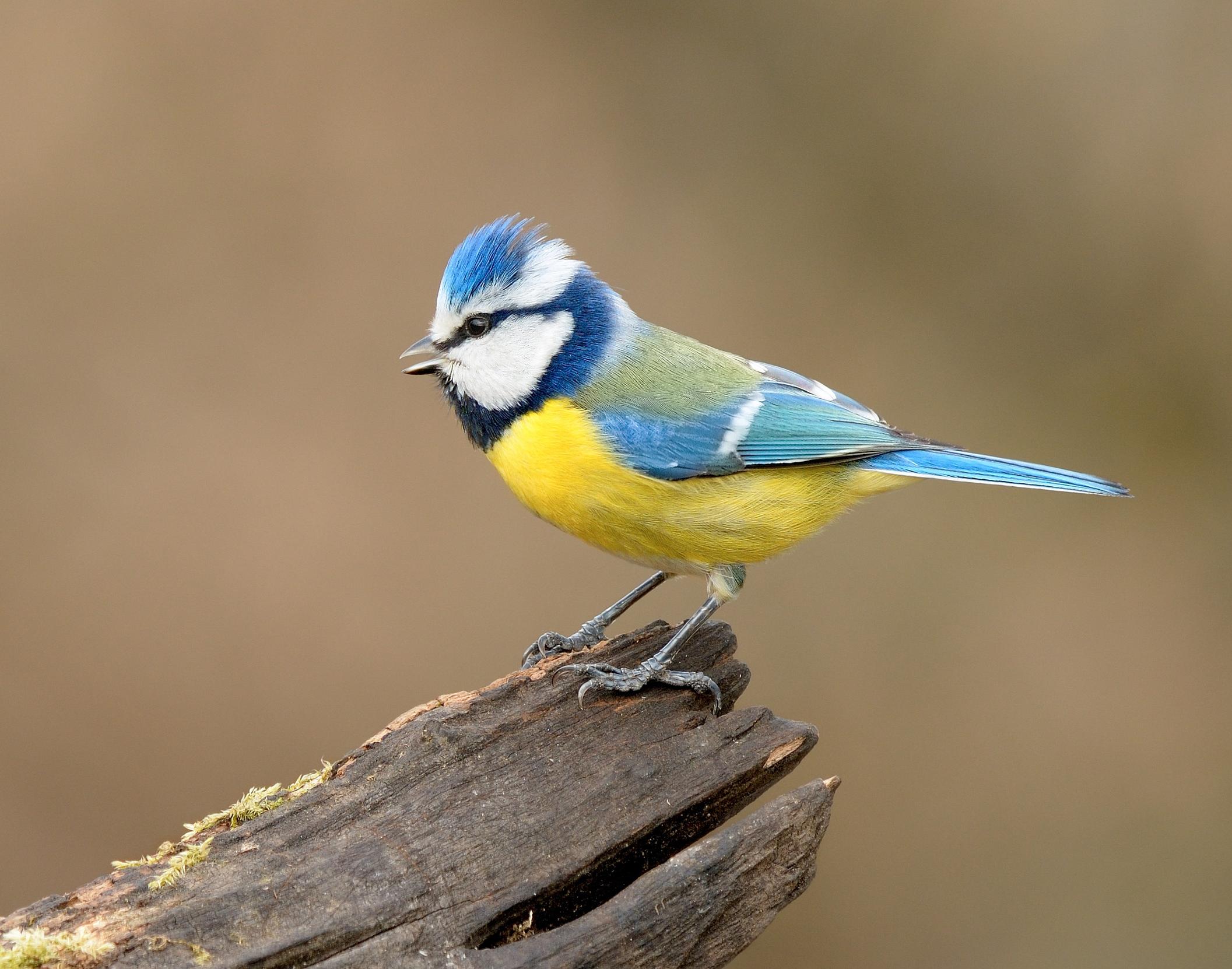
The less colourful cousin of the Blue Tit is the small and chirpy Coal Tit. They have black heads with white cheeks, and bright-as-a-button black eyes. Come winter, Coal Tits will form flocks with Blue Tits and Great Tits, roaming woodlands and gardens on the hunt for food and shelter! While Coal Tits favour coniferous woodlands, they’ll happily visit gardens and parks too.

Coal Tits have a high-pitched ‘pe-pee’ call, which feels somewhat in keeping with its diminutive form! They often repeat it, giving you a good chance to get your ear in.
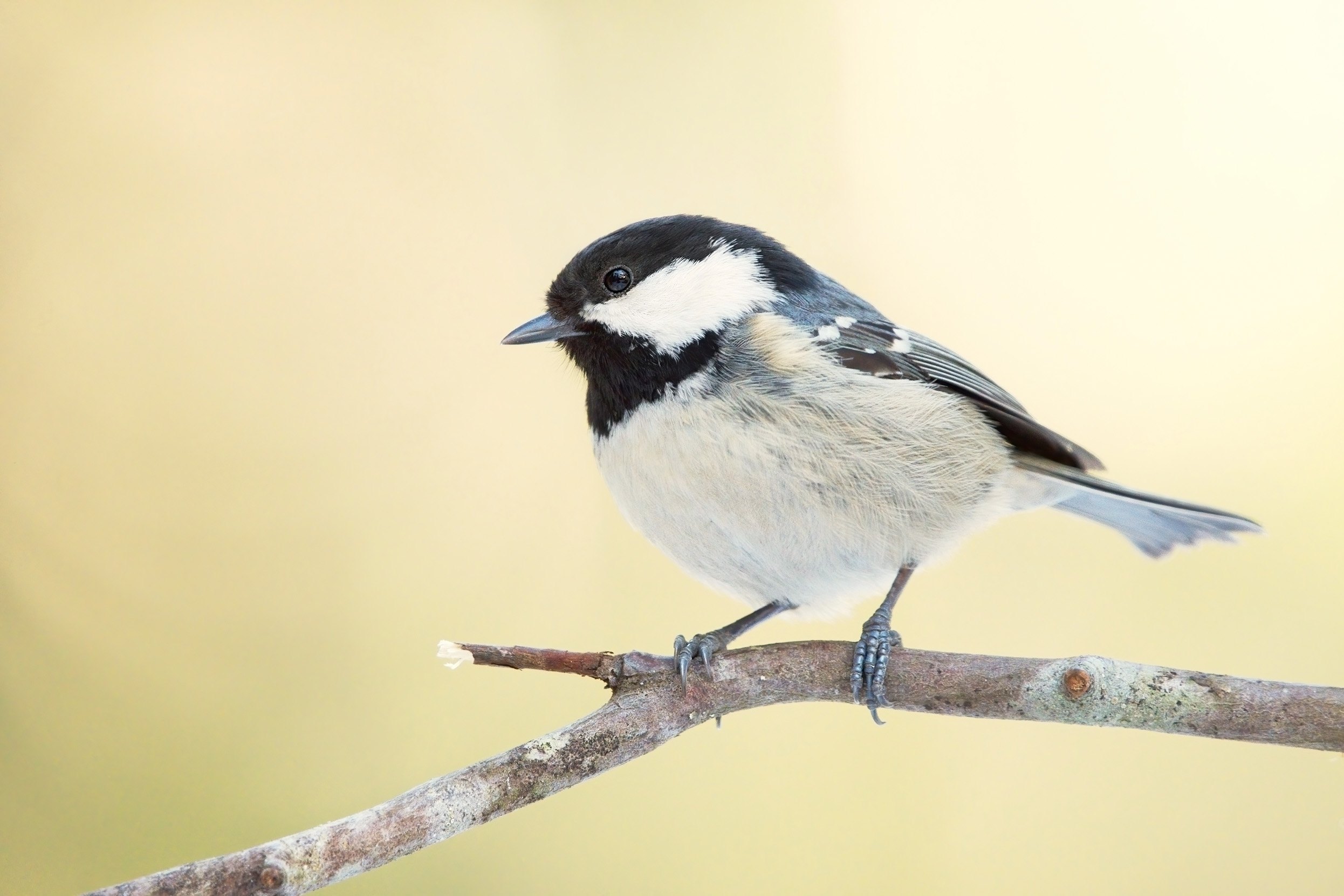
The pompom of the bird world, Long-tailed Tits are universally loved. With a spherical body, Long-tailed Tits have small beady eyes set in white cheeks, topped with black eyebrows that extend all the way down the back. Their white tummies and black wings are flecked with pink, and their tail is, well, you guessed it, extraordinarily long.
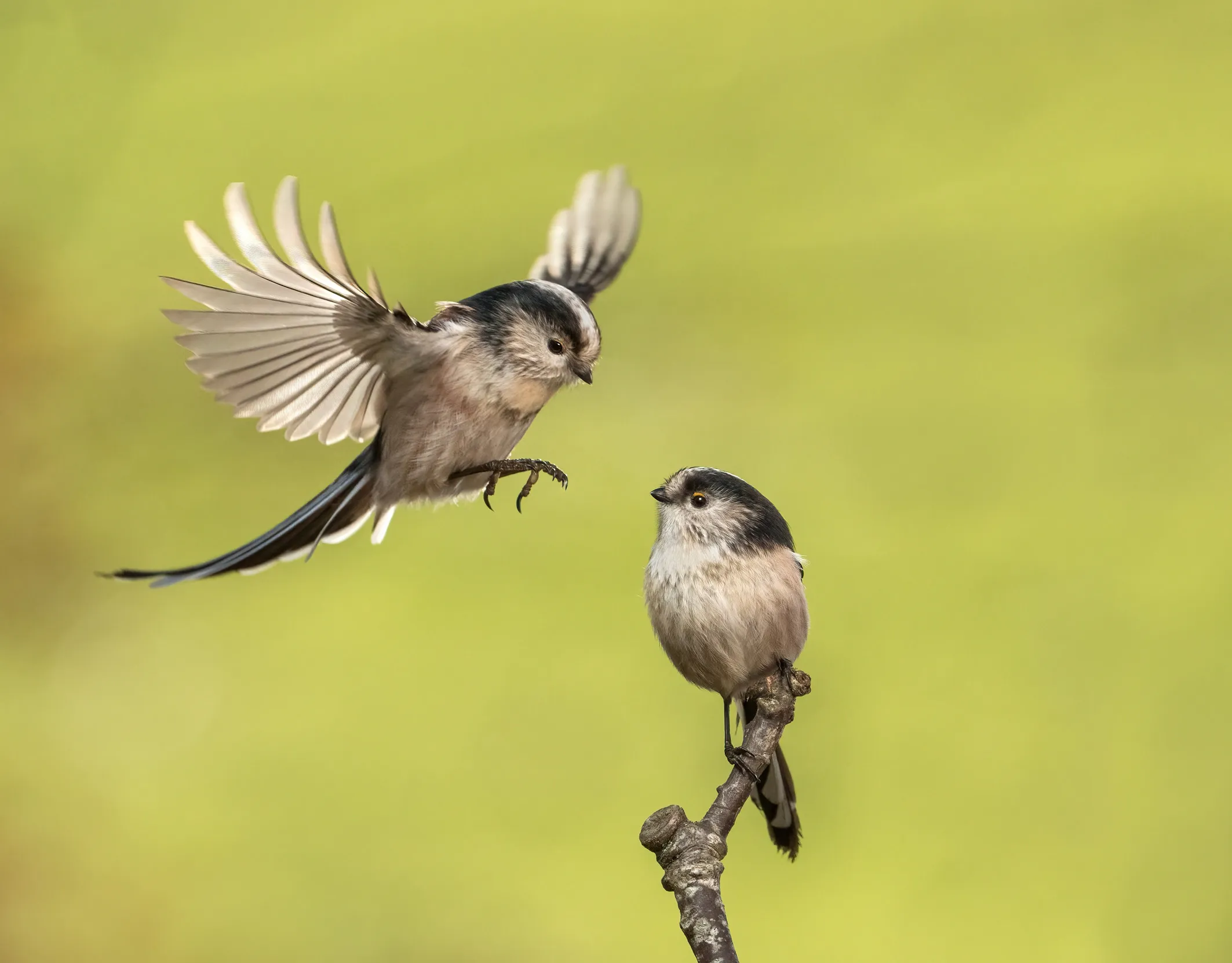
Long-tailed Tits don’t so much sing as chat excitably. You'll often hear them using high pitched shrills to communicate as groups dart from tree to tree. They also utter a “sirrut sirrut” sound when they feel threatened.

Great in name and great in stature, Great Tits are the largest tit in the UK, and they don’t let the other birds on the feeders forget it. Often telling other birds to wait their turn, Great Tits can hog bird feeders with a confidence rivalling that of Starlings. They’re noticeably larger than Blue Tits, and wear a splendid black head with white cheeks, yellow bellies and a central black stripe.

Great Tits have a wide song vocabulary, from the easily-recognisable ‘tee-cher, tee-cher', to the fiendishly difficult tunes and trills. One common call is a recurring "chink", not to be confused with the "pink pink" Chaffinch call.

Chaffinches are gorgeous garden visitors, decked out in grey, black and pink. Chaffinches don’t tend to feed from feeders like many other garden visitors. Instead, you’re likely to see them hopping about on the ground below, picking up tasty morsels as they drop.
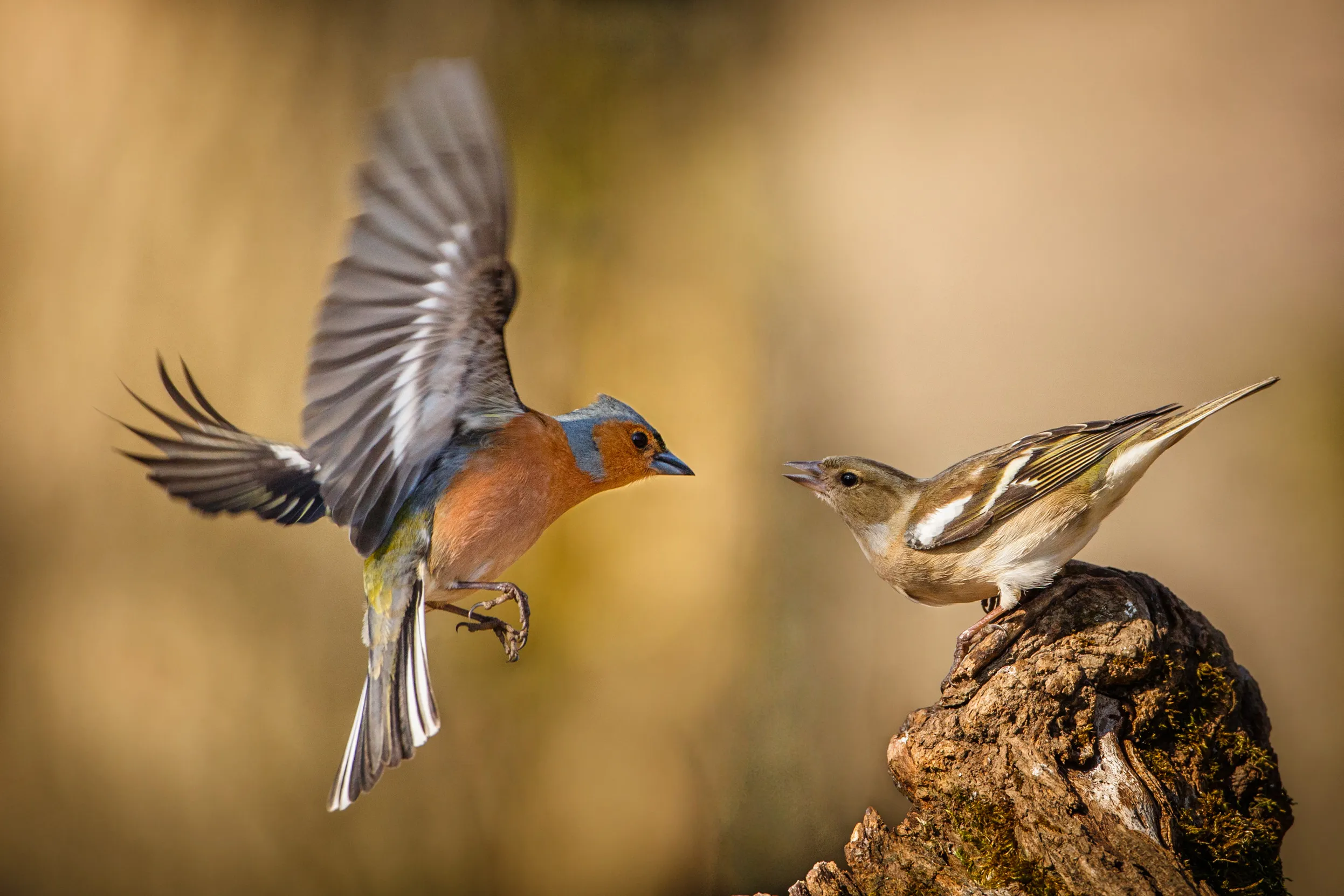
Chaffinches have a number of calls, but their most recognisable is their loud ‘pink, pink’ call. Less insistent and more sporadic than a Blackbird’s ‘chinking’.

Goldfinches are colourful and sociable. They’re adorned with vivid yellow stripes and black wings, with white cheeks and a red face. Their liquid twittering is just another charm they possess, and on that note – did you know a group is called a charm of Goldfinches?
Goldfinches have long, fine beaks, which allows them to tease out seeds. If you leave seedheads standing through the winter, you might spot Goldfinches perching on the stems to nibble the seeds.
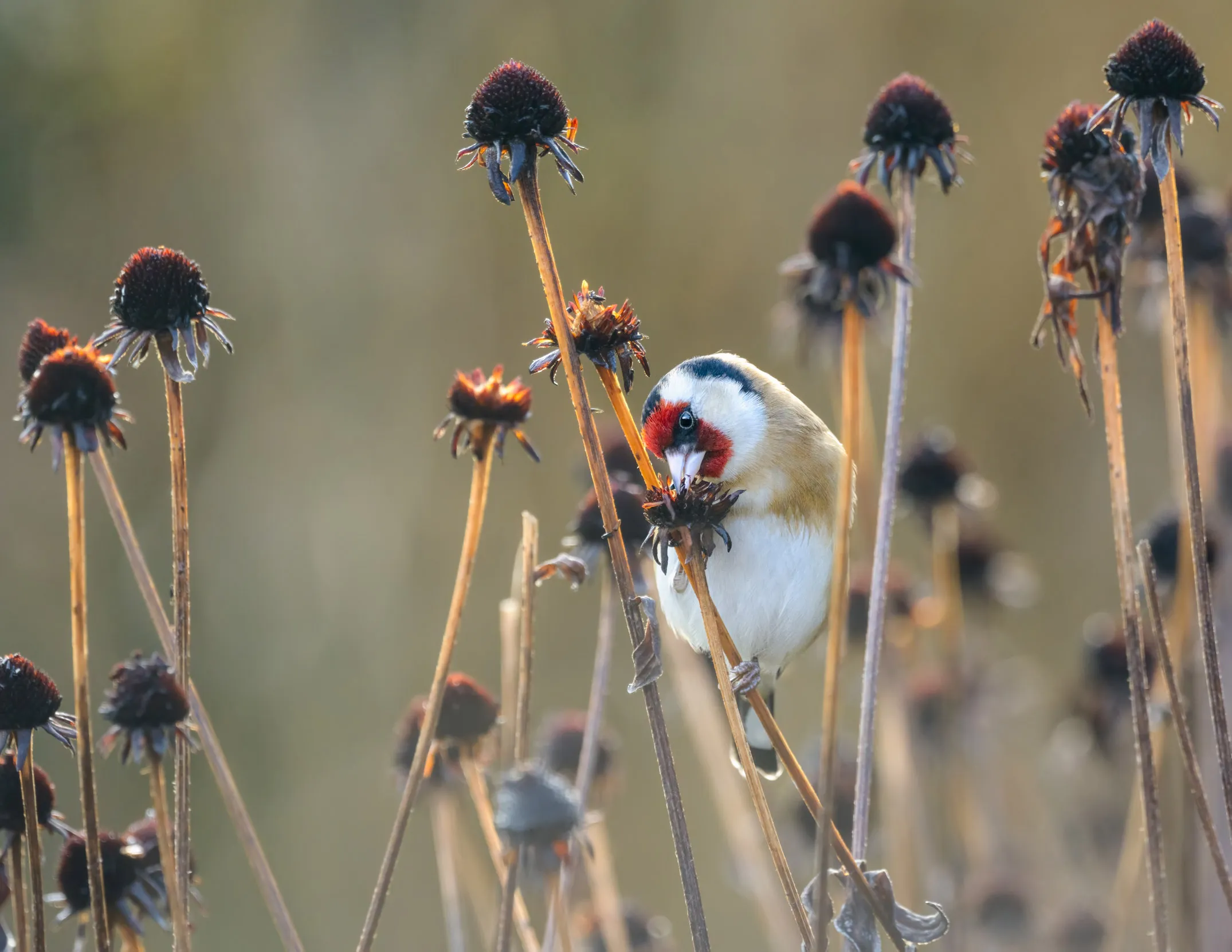
A fast-paced song with chirps, trills and warbling notes, a charm of Goldfinches warbling together is a lovely sound. Less a specific tune, and more like the babbling of a brook.

Another vibrant visitor, the clue is in the name with Greenfinches, who have a lovely green-yellow colouring. They're a little larger than Sparrows, with a chunky beak. Greenfinches have been struggling in recent years, with numbers suffering declines. This is partly caused by trichomonosis, a parasite-induced disease, which you can help prevent the spread of by keeping your bird feeders clean.

Greenfinches sing in a bright voice that can sometimes sound a little wheezy. Singing while perched, you might hear a variety of trills, including a repeated ‘too-eee’, followed by a ‘dweeez’. Its call in flight is a repetitive and rapid "chichichichit".

We can’t wait to kick of Big Garden Birdwatch this year. For more info, and to register, just head to this page to discover more.